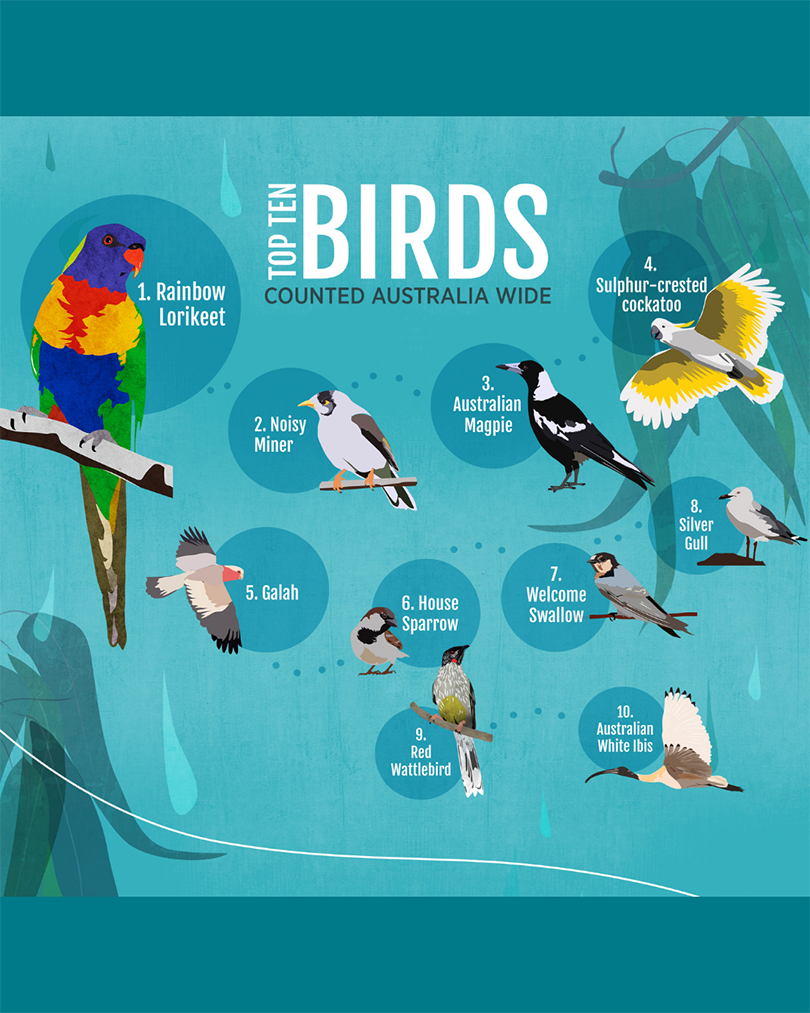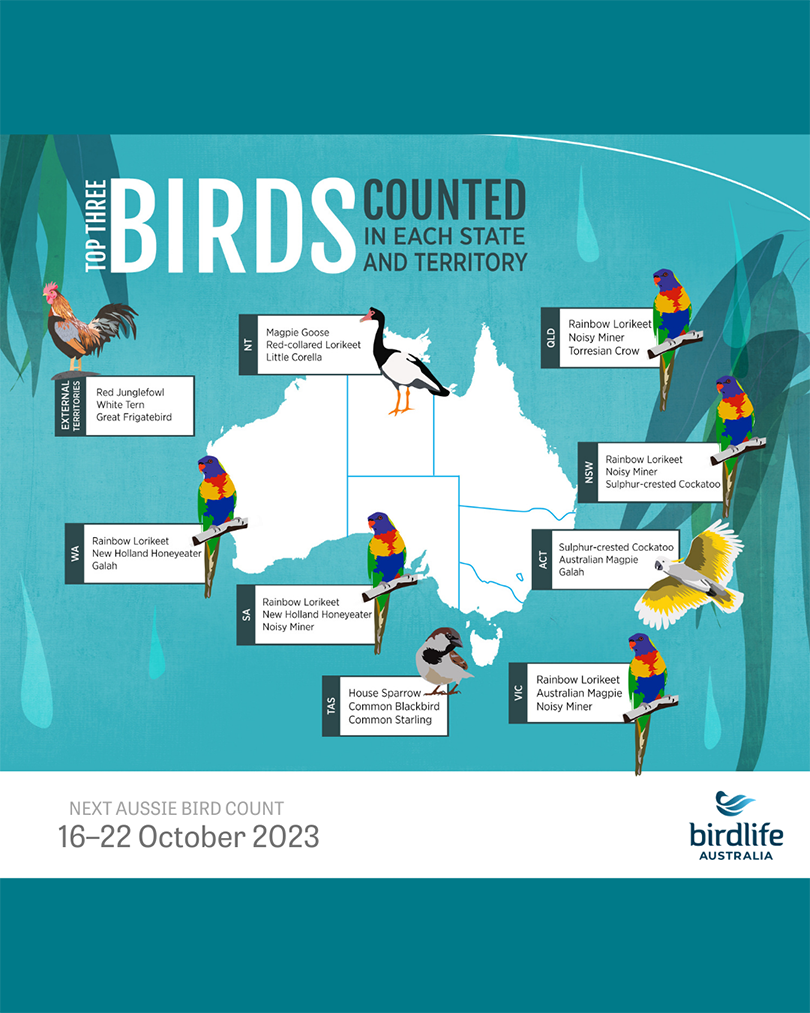2022 Aussie Bird Count results
Wet weather brings out the mudlarks!
Even severe floods and constant deluges weren’t enough to deter a growing flock of Australians from participating in the 2022 Aussie Bird Count, held last October.
Despite record rains and floods over much of New South Wales, Victoria and Tasmania, over 77,000 people across Australia braved the conditions to be part of the nation’s largest citizen science project.
“Between us, we recorded more than 3.9 million birds of 620 different species,” said Sean Dooley, BirdLife Australia’s National Public Affairs Manager.
“It’s an incredible testament to the diversity of birdlife we have in our own backyard here in Australia.”
“While some of these surveys came from very remote areas — even on Norfolk Island and Christmas Island — the majority were conducted in the places where most people live: our cities, towns and farms,” Sean said.
While heavy downpours saw a small drop in the number of surveys in the eastern states, the nationwide results did not vary greatly from previous years’ totals. In 2022, the top ten birds remained the same, with the Rainbow Lorikeet easily taking out the number one spot as most numerous bird — for the ninth year running!
“We thought that the wet weather may have had an impact, but the only major mover in the top 20 was the New Holland Honeyeater, which leapt four spots, up to 11th place in 2022,” Sean added.
While Aussie Bird counters proved themselves to be great mudlarks in the wet weather, the actual Mudlark, another name for the Magpie-lark, was one common bird which also seems to have thrived in the wet conditions, especially in country regions.
“It was the fourth most frequently recorded bird across regional Australia, where it was recorded in more than one in four surveys — and one in three surveys in Queensland!”
Another bird which didn’t seem to be deterred by the wet weather was the Eastern Koel, a large, migratory cuckoo found in eastern and northern Australia. Many counters didn’t even have to go outside into the rain to know that a koel was there, as its loud and distinctive ‘coo-ee’ call is easily heard.
“2022 saw the highest numbers of Eastern Koels in every state where it occurs,” Sean added. “This was particularly noticeable in Victoria and the ACT, where the Koel has been expanding its range in recent years. For example, it jumped more than a hundred places in Victoria in the past five years and 60 places in Canberra — quite remarkable for a species that was a rarity there just 20 years ago.”
The 2023 Aussie Bird Count will take place from 16-22 October.
Download the 2022 results infographic here.
Download the 2022 species list for Australia and the states/territories here.




Why we need you
Collecting a huge dataset like the one we get from the Aussie Bird Count is only possible thanks to you. The vast amount of data collected from citizen science programs like the Aussie Bird Count fills a knowledge gap, particularly on urban bird species, and gives us access to areas we usually wouldn’t be able to survey, like your backyard!
As well as helping ecologists track large-scale biodiversity trends like these, it also gives people the chance to connect with their natural environment and gain a greater appreciation of our unique fauna.
Count birds year-round
If counting birds for one week each October isn’t enough, and you’re keen to submit bird surveys year-round, you should check out our bird monitoring programs — Birds in Backyards and Birdata.


